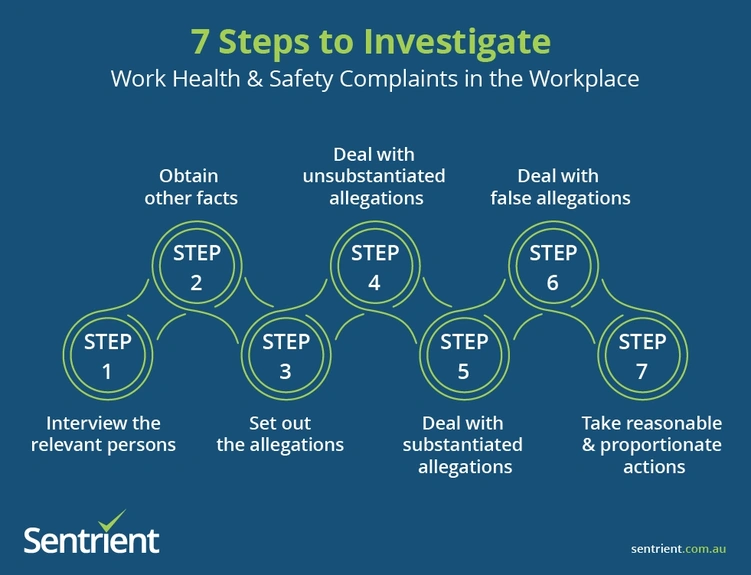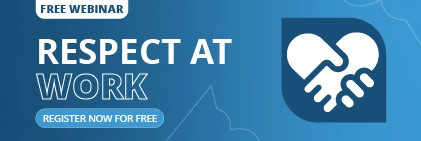Work Health and Safety (WHS) is a serious issue, and you should be aware of your role and duties to eliminate work-related incidents to the extent possible or minimise them. Apart from physical safety, you should also understand the impact that mental health issues can have in your workplace.
Work Health and Safety and the Law
Mental illnesses can be covered by the definition of disability in the Disability Discrimination Act 1992.
Disability discrimination occurs when a person is treated less favourably or not given the same opportunities as others in a similar situation because of their disability.
It also occurs when an unreasonable rule or policy is the same for everyone but has an unfair effect on people with a disability.
Accordingly, employers should consider what reasonable adjustments or changes to the working environment could be made to support workers with mental illness in performing their duties more effectively.
Employers also have obligations to employees with disabilities, including those with mental illness, under the Fair Work Act 2009 (Cth) and occupational health and safety legislation. Privacy legislation applies to disclosures about an employee’s personal information.
A range of federal, state and territory authorities support work health and safety laws.
You might be interested in : Work Health and Safety (WHS) Training Course
Investigating a Complaint of Work Health and Safety in the Workplace
A complaint of work-related incidents may need to be investigated. Subject to the nature of the complaint, it might be appropriate for a formal determination to be made about what has happened and any disciplinary action. Where an investigation occurs, you must comply with your employer’s policy and notify human resources or a senior manager.

Step 1: Interview the Relevant Persons
As part of an investigation, all relevant persons will be identified and corresponded with, which might include interviewing or inviting a statement or written response in respect of the alleged breach.
Where interviews are conducted:
- the complainant, respondent(s) and any witnesses will be interviewed separately
- records of the interviews will be documented
- requests made by a witness for the attendance of a support person at an interview will not be unreasonably refused.
Step 2: Obtain Other Facts
As part of an investigation, an employer can use reasonable means to obtain any other relevant facts. This may involve interviewing witnesses and examining evidence such as emails, internet content, including social media sites, or camera footage.
During the investigation process, it is always important that:
- no assumptions are made that the respondent committed the conduct complained of or alleged
- confidentiality is observed, and disclosure is minimised when dealing with complaints
- any disciplinary action taken is proportionate to the conduct committed by the person found to have breached the policy and engaged in inappropriate conduct
Step 3: Set Out the Allegations
In addition to setting out the allegations to the respondent in writing, there may also be a summary of the allegations provided at an interview. The respondent(s) should be advised of the potential outcomes of the investigation if the allegations are substantiated.
Depending on the circumstances, including the seriousness of any allegation, the respondent and any other parties may be stood down from their duties without pay during the period that the investigation is being carried out. However, it is important that you consider other policy documents or the respondent’s employment contract prior to determining whether there are any restrictions upon the stand down.
Step 4: Deal With Unsubstantiated Allegations
If an allegation is found to be unsubstantiated in that it is not a work health and safety issue and it is not in breach of your employer’s policy, no further action will be taken against the respondent in respect of the complaint. In this case, the reason for the decision will be explained to the complainant and the respondent.
Step 5: Deal With Substantiated Allegations
If an allegation is substantiated, the possible outcomes could include, but are not limited to:
- requiring an apology
- counselling or training
- undertakings as to agreed forms of future behaviour
- taking disciplinary action against the respondent, including the issuance of a warning, demotion, or termination of employment.
Where the disciplinary action may be termination of employment, separate written correspondence should be issued to the respondent to advise them of the fact that the allegations have been substantiated. The correspondence should provide written reasons for the substantiated findings. The respondent may be invited to show cause as to why their employment should not be terminated in the circumstances.
The disciplinary outcome should be communicated in writing to the respective parties, including the complainant, noting that there may not be absolute disclosure of all matters by reason of privacy.
Step 6: Deal With False Allegations
Intentionally false allegations, or allegations that are found to be unsubstantiated because they are frivolous or vexatious should be viewed seriously. Where found to be intentional or malicious, you may consider that disciplinary action should be taken, up to and including termination of the complainant’s employment with or without notice.
Step 7: Take Reasonable and Proportionate Actions
You must always exercise caution and common sense when dealing with incidents of work health and safety. Reasonable and proportionate actions depend upon the nature and seriousness of the conduct, which can include consequences for the complainant or the employer, including in respect to workplace productivity.
When deciding on the appropriate disciplinary action, you may consider the following:
- the size and nature of the employer’s business or operations
- the available resources and budget
- practicability and the cost of a response.
To demonstrate compliance, it is important to maintain records that demonstrate the reasonable steps you have taken to prevent and respond to work health and safety incidents in the workplace. You should always consider and implement measures that promote safety in the workplace.
Like to learn more?
To find out more about the responsibilities of a supervisor and manager when it comes to creating a safe and healthy workplace, please refer to the Sentrient Creating a Safe and Healthy Workplace for Supervisors and Managers online course from our website.
Other Online Compliance Courses For Supervisors and Managers
The Creating a Safe and Healthy Workplace for Supervisors and Managers training is one of a suite of six online compliance courses that deal with the duty that supervisors and managers have to represent their employer and contribute to a safe, inclusive and respectful workplace culture.
- Preventing and responding to sexual harassment for supervisors and managers
- Preventing and responding to workplace bullying for supervisors and managers
- Creating a safe and healthy workplace for supervisors and managers
- Enabling diversity and workplace flexibility for supervisors and managers
- Managing performance and misconduct for supervisors and managers
- Resolving conflict and grievances for supervisors and managers
To get a free demonstration of the Creating a Safe and Healthy Workplace for Supervisors and Managers online course, please get in touch with us today!
Read More About Work Health and Safety:
- 4 Things to Consider for Supervisors and Managers When Managing Work Health and Safety Risks
- The Duty of a Supervisor and Manager to Provide a Safe and Healthy Workplace
- 7 Steps to Investigate a Complaint of Work Health and Safety Incidents in The Workplace
- New Compliance Course Released – Creating a Safe and Healthy workplace for Supervisors and Managers
- Important Work Health and Safety Considerations for Church Leaders





